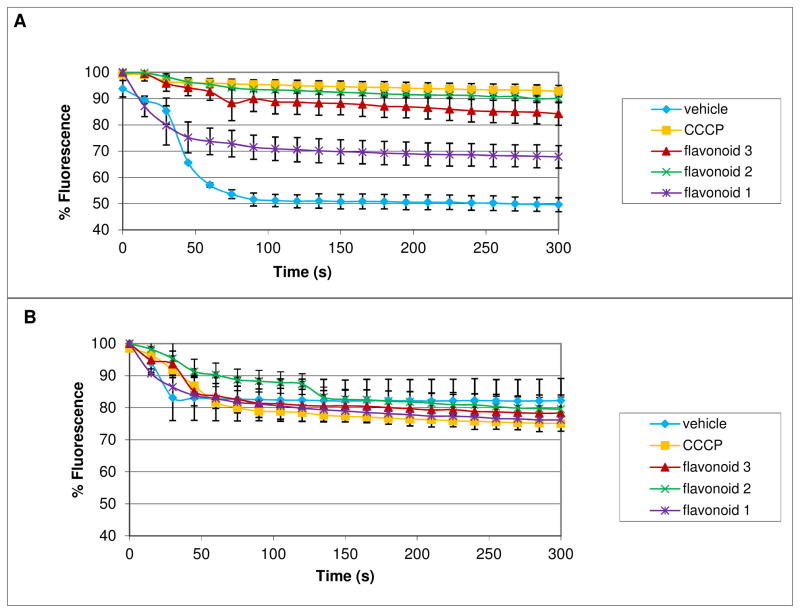Figure 5.
The three flavonoids from Hydrastis canadensis inhibit the NorA efflux pump of Staphylococcus aureus. Decrease in fluorescence over time is due to efflux of ethidium bromide, which is blocked by the positive control (CCCP) and all three flavonoids, sideroxylin (1), 8-desmethyl-sideroxylin (2), and 6-desmethyl-sideroxylin (3). Sideoxylin is the least active of the three flavonoids. The effect is observed with wild type Staphylococcus aureus (NCTC8325-4) (A) but not a NorA deletion mutant (K1758) (B). All of the flavonoids and controls were tested at a final concentration of 100 μM in Müeller-Hinton broth containing 10% DMSO (vehicle). Each point is an average % fluorescence from three independent measurements, with error bars equal to ± standard error (SE).

